Eighth Grade Curriculum
- 7 courses included
- 14-day satisfaction guarantee*
- Update grade level anytime
Subscribe more students, save more!
10% off
2 students
20% off
3-5 students
25% off
6+ students
Designed for the way modern teenagers learn, our Cinema Series eighth grade curriculum offers story-driven instruction, relatable teachers and short form visual content to maximize engagement. Your eighth grader is refining their ability to think independently while exploring complex concepts with greater depth.
In english, eighth graders will expand thinking skills through instruction that produces clear coherent writing. In math, eighth graders will dive deep into algebraic and geometric concepts in preparation for high school.
Eighth graders have several options to choose from for science and social studies and electives courses. This gives them the opportunity to customize their schedule.
Most popular science and social studies classes for eighth graders:
- Physical Science- Explore matter, energy and the physical universe.
- United States History - Examine the effects of territorial expansion, the Civil War, and the connections between culture and government.
Eighth graders choose from the following elective options:
- Introduction to Art
- Introduction to Public Speaking & Communication
- Environmental Science
- Strategies for Academic Success
- Online Learning & Digital Citizenship
Science Alternatives:
- Life Science
- Earth Space Science
- Environmental Science
Social Studies Alternatives:
- Ancient World History
- World Culture & Geography
English 8
Unit 1: Universal Themes in Myths
Chapter 1: What Are Myths?
Chapter 2: Identifying Themes in Myths
Chapter 3: Themes Across Cultures
Chapter 4: Using Text Evidence
Chapter 5: Heroes in Myths
Chapter 6: Character Archetypes in Myths
Chapter 7: Conflict in Myths
Chapter 8: Setting and Its Impact
Chapter 9: Dialogue and Character Development
Chapter 10: Comparing Myth Structures
Chapter 11: Comparing Myth Adaptations
Chapter 12: The Endings of Myths
Chapter 13: Establishing Context and Point of View
Chapter 14: Developing Characters Through Dialogue and Description
Chapter 15: Using Transitions and Sensory Details
Chapter 16: Crafting Meaningful Conclusions
Unit 2: Analyzing and Crafting Arguments
Chapter 1: Identifying Main Ideas
Chapter 2: Structuring an Argument
Chapter 3: Counterclaims
Chapter 4: Recognizing Logical Fallacies
Chapter 5: Analyzing Persuasive Techniques
Chapter 6: Comparing Two Arguments
Chapter 7: Evaluating Visual and Digital Arguments
Chapter 8: Emotional Appeals in Arguments
Chapter 9: Fact vs. Opinion
Chapter 10: Using Data in Arguments
Chapter 11: Crafting a Call to Action
Chapter 12: Writing a Persuasive Email
Chapter 13: Peer Reviewing Arguments
Chapter 14: Sharing Arguments with Others
Unit 3: The Power of Perspective in Myths
Chapter 1: Introduction to Perspective
Chapter 2: Myths as Oral Tradition
Chapter 3: Suspense in Myths
Chapter 4: Humor in Myths
Chapter 5: Tone and Word Choice in Myths
Chapter 6: Myths As Allusions
Chapter 7: Identifying and Interpreting Figurative Language in Myths
Chapter 8: Influence of Figurative Language on Meaning and Tone in Myths
Chapter 9: The Role of Imagery in Myths
Chapter 10: Symbolism in Myths
Chapter 11: Myths and Modern Values
Chapter 12: Literary Analysis of Myths
Chapter 13: Crafting a Strong Claim
Chapter 14: Using Evidence to Support Claims
Chapter 15: Writing a Cohesive Argument
Unit 4: Research is Storytelling
Chapter 1: Developing Research Questions
Chapter 2: Finding Reliable Sources
Chapter 3: Using Search Terms Effectively
Chapter 4: Paraphrasing and Avoiding Plagiarism
Chapter 5: Organizing Research Notes
Chapter 6: Citing Sources in Standard Formats
Chapter 7: Creating an Annotated Bibliography
Chapter 8: Synthesizing Information from Multiple Sources
Chapter 9: Writing a Research Outline
Chapter 10: Drafting a Thesis Statement for a Research Essay
Chapter 11: Drafting an Introduction to a Research Essay
Chapter 12: Drafting Body Paragraphs
Chapter 13: Drafting a Conclusion for a Research Essay
Chapter 14: Revising for Clarity and Impact
Chapter 15: Editing for Clarity and Accuracy
Chapter 16: Editing Citations (MLA Formatting)
Chapter 17: Presenting Research
Physical Science
Unit 1: Structure and Properties of Matter
Chapter 1: Atoms and Molecules
Chapter 2: Atomic Structure
Chapter 3: The Periodic Table
Chapter 4: Metallic and Nonmetallic Structures
Chapter 5: States of Matter
Chapter 6: Changes in States of Matter
Chapter 7: Crystals and Extended Structures
Chapter 8: Synthetic Materials
Unit 2: Chemical Reactions
Chapter 1: Introduction to Chemical Reactions
Chapter 2: Evidence of Chemical Reactions
Chapter 3: Physical and Chemical Changes
Chapter 4: Chemical Reactions in Everyday Life
Chapter 5: Reactants and Products
Chapter 6: Mass Conservation in Chemical Reactions
Chapter 7: Energy in Chemical Reactions
Chapter 8: Evaluate Food-Warming Device Designs
Chapter 9: Optimize Food-Warming Device Designs
Unit 3: Force and Motion
Chapter 1: Introduction to Force and Motion
Chapter 2: Contact Forces
Chapter 3: Non-Contact Forces
Chapter 4: Balanced and Unbalanced Forces
Chapter 5: Newton's First Law of Motion
Chapter 6: Newton's Second Law – Force, Mass, and Acceleration
Chapter 7: Newton's Third Law – Force Pairs
Chapter 8: Amusement Park Engineering Design
Unit 4: Energy Transformations and Conservation
Chapter 1: Introduction to Energy and Energy Forms
Chapter 2: Kinetic Energy: The Energy of Motion
Chapter 3: Potential Energy: Stored Energy
Chapter 4: Energy Transformations in a System
Chapter 5: Investigating Energy Transfer Between Objects
Chapter 6: Friction and Energy
Chapter 7: Thermal Energy Transfer
Chapter 8: Investigating Thermal Energy Transfer and Temperature Change
Chapter 9: Designing a Thermal Energy Transfer Solution
Chapter 10: Optimizing and Testing the Thermal Energy Transfer Design
Unit 5: Waves and Electromagnetic Radiation
Chapter 1: Introduction to Waves
Chapter 2: Wave Properties
Chapter 3: Sound Wave Properties
Chapter 4: Reflection, Absorption, and Transmission of Sound Waves
Chapter 5: Light Waves – The Electromagnetic Spectrum
Chapter 6: Reflection, Absorption, and Transmission of Light Waves
Chapter 7: Refraction of Light Waves
Chapter 8: Comparing Analog and Digital Signals
Chapter 9: Wireless Communication
Chapter 10: Engineering a Soundproof Amusement Park Attraction
Unit 6: Electricity and Magnetism
Chapter 1: Introduction to Electricity and Magnetism
Chapter 2: Magnetic Fields
Chapter 3: Electric Circuits
Chapter 4: Investigating Magnetic Force Strength
Chapter 5: Electromagnetic Fields
Chapter 6: Wireless Charging
Chapter 7: Building a Simple Motor
United States History
Unit 1: The Road to Revolution
Chapter 1: European Political Ideas and the Seeds of the Revolution
Chapter 2: The Radical Seeds of Democracy
Chapter 3: Battle for a Continent: French and Indian War
Chapter 4: Road to Revolution: The British Start Taxing the Colonists
Chapter 5: The Declaration of Independence
Unit 2: Building a New Nation
Chapter 1: The Articles of Confederation
Chapter 2: The Constitution: A Compromise
Chapter 3: The Bill of Rights
Chapter 4: The Constitution
Unit 3: The Early Republic and Expansion
Chapter 1: George Washington: The Nation’s First President
Chapter 2: Neutrality and Early U.S. Foreign Policy
Chapter 3: Physical Landscape – Geography of the New United States
Chapter 4: Growing Pains of a New Nation – Early American Reform Movements
Chapter 5: Life in a Country Divided – North and South (Early to Mid 1800s)
Chapter 6: Early Immigration in the North
Chapter 7: Westward Expansion in the Early 1800s
Chapter 8: Indian Removal Act and the Trail of Tears
Chapter 9: The Mexican-American War and Reshaping the American Southwest
Unit 4: The Road to Civil War
Chapter 1: Slavery – A Moral and Economic Questi
Chapter 2: The Birth of American Abolition
Chapter 3: The Underground Railroad
Chapter 4: Controversy Over Slavery in the West
Chapter 5: The Election of Abraham Lincoln
Chapter 6: Southern Secession – This Means War!
Unit 5: The American Civil War
Chapter 1: Key Differences Between Northern and Southern Armies
Chapter 2: Key Leaders of the War – Comparing Ulysses S. Grant and Robert E. Lee
Chapter 3: Military Strategy and Key Battles of the Civil War
Chapter 4: Emancipation Proclamation and a Shift in the War
Chapter 5: Total War – War’s Impact on Civilians
Unit 6: Reconstructing the Nation
Chapter 1: Lincoln’s Assassination and Johnson’s Reconstruction
Chapter 2: Congress Takes Over Reconstruction
Chapter 3: Economically Rebuilding the South
Chapter 4: Reconstruction Comes to an End
Chapter 5: Ida B. Wells and the Resistance Movement
Chapter 6: Transcontinental Railroad (Completed 1869)
Chapter 7: The Wild West
Chapter 8: Oklahoma Land Rush
Chapter 9: Settlers and Native Americans
Chapter 10: The Wounded Knee Massacre
Chapter 11: Native American Resistance to Westward Expansion
Unit 7: The Industrial Revolution and Gilded Age
Chapter 1: New Inventions and Technologies
Chapter 2: The Assembly Line Brings Big Business
Chapter 3: Robber Barons or Captains of Industry? The Reality of the Gilded Age
Chapter 4: A Second Wave of Immigration
Chapter 5: Industrial Working Conditions and Child Labor
Chapter 6: The Rise of Labor Unions – A Response to Industrial Working Conditions































